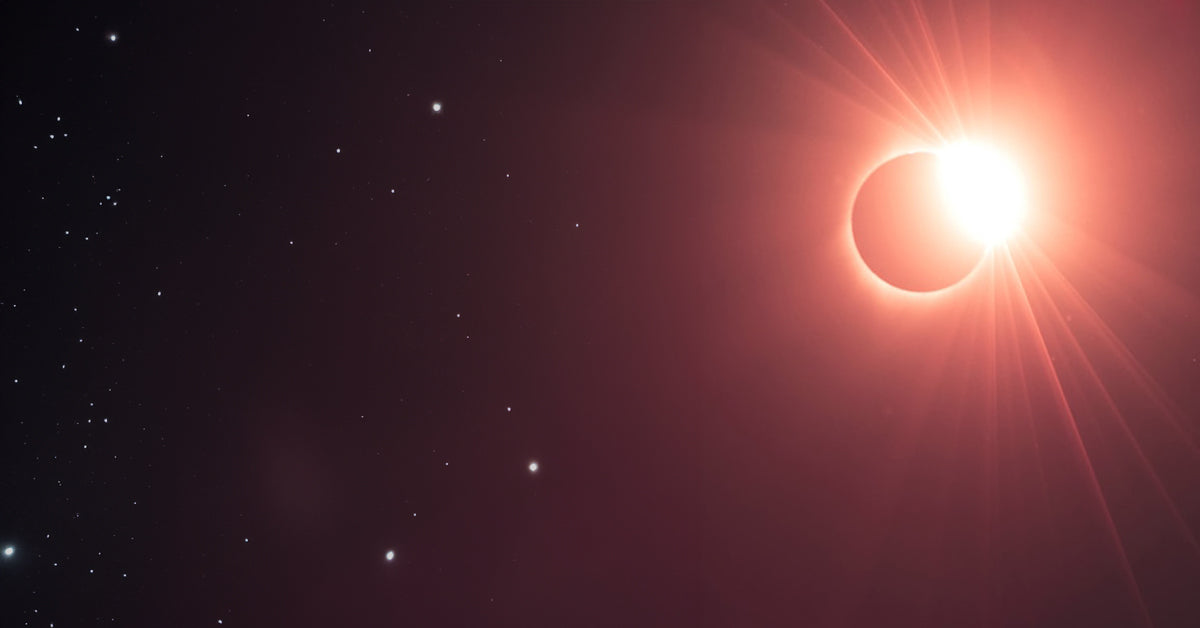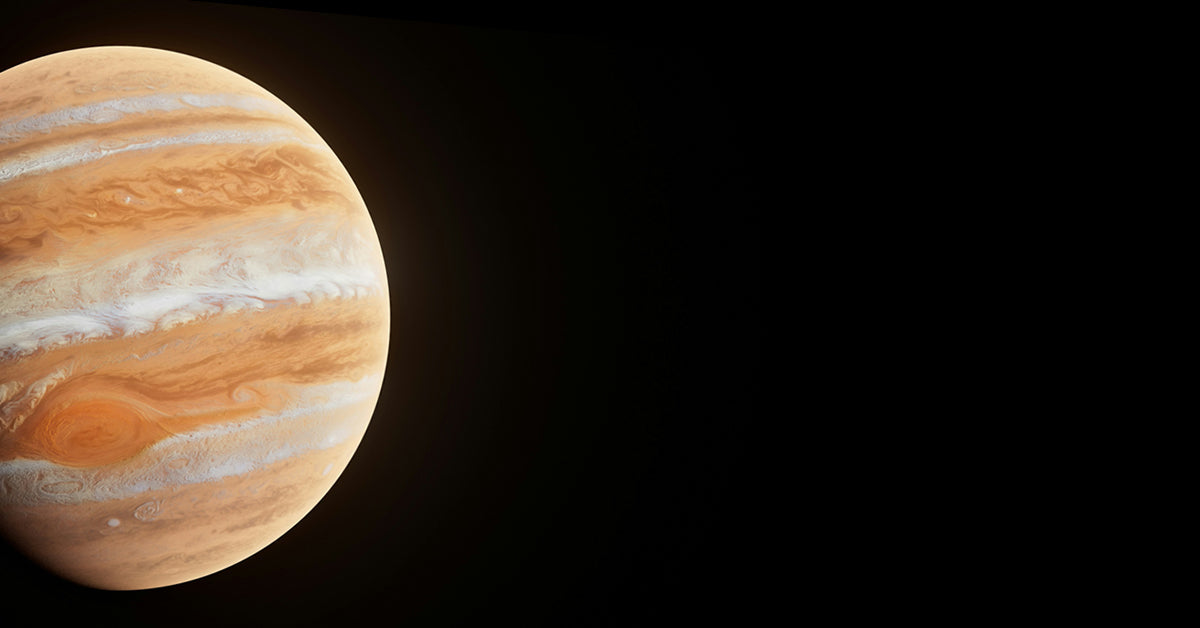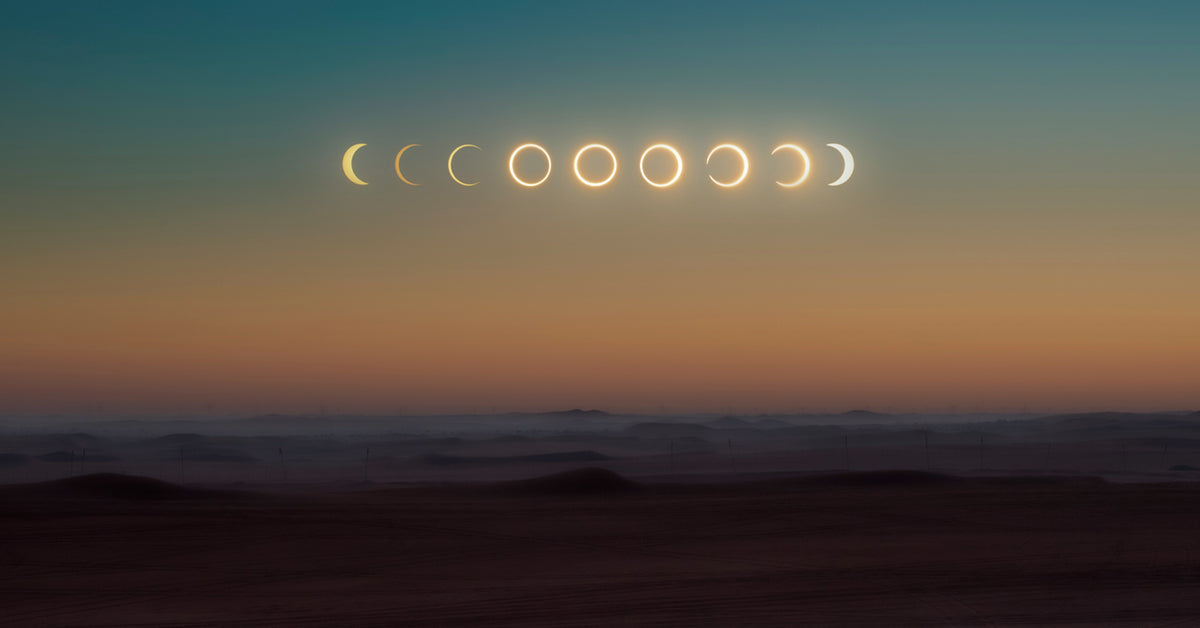Your Cart is Empty

October is a month of transformation. Just as leaves are changing colors, the planetary interactions this October also reveal dramatic coming changes.
Rahu is in Gandanta while Rahu and Ketu are about to enter new signs. Two significant eclipses will take place this month.
The nodes are points where the orbit of the Moon meets the plane of the Sun and the Earth. Rahu is the north node, whose shadow falls north of the equator. Ketu, the south node, is the shadow south of the equator. These junction points are also places where eclipses can occur.
Rahu is about to move from Aries to Pisces. Rahu and Ketu move counterclockwise in the opposite direction of the other planets. Aries, the first sign of the zodiac, indicates new beginnings. Pisces, the last sign, indicates endings.
Gandanta, the threshold between water and fire signs, holds complex karma which sometimes manifests as a loss of control. The earthquake in Morocco and the Libya floods are examples of this instability and loss of control. A looming government shutdown in the United States is another example of loss of control. Rahu’s presence in Gandanta, amplified by Mars’ influence, hints at a precarious period.
Rahu has been in Gandanta since mid-September and will move from Aries into Pisces on November 28th. (True node) Rahu will then be Gandanta in Pisces. This lingering instability reminds us that the rest of the year remains unpredictable.
We are experiencing a paradigm shift. Fresh ideas are replacing the old, and assumptions are being redefined.
Rahu is a co-ruler of Aquarius with a strong affinity for science, and his transit through Aries has helped usher in scientific innovation and discoveries. For example:
On October 14th, 2023, a solar eclipse will be visible across North, Central, and South America. It begins in Oregon at 9:13 a.m. PDT, ends in Texas at 12:03 p.m. CDT. For those living near Sacramento, California, the eclipse will reach maximum at 9:20 a.m.
This annular eclipse is the second of three notable solar eclipses visible from the U.S.
The astrological effect of eclipses will often impact vast numbers of people. Eclipses can also affect us individually if we have planets where they occur.
The coming solar eclipse will take place with the Sun and the Moon close to 27 degrees Virgo while Ketu is within the first degree of Libra.
So, where are Mercury and Mars at the time of the eclipse?
Mercury will be at 23 degrees Virgo and is thus part of the eclipse. Mercury is in Virgo between October 1st and 18th. Mercury is exalted and is usually very comfortable in Virgo but is at this time also influenced by the eclipse, which makes Mercury’s behavior unpredictable.
When Mars leaves Virgo on October 3rd, he joins Ketu. Mars and Ketu are conjunct in the first degree of Libra for several days. This makes for intense energy before the solar eclipse on October 14th.
Mars/Ketu conjunctions can manifest explosive and violent events. World leaders are also vulnerable at this time.
Following the solar eclipse, a lunar eclipse will take place on October 28th at 10 degrees Aries. The Moon will be close to Rahu in Gandanta, with Jupiter also in Aries. The Sun will be in Libra, joined by Mercury, Mars, and Ketu. This lunar eclipse suggests potential conflicts and disharmony.
While eclipses seldom trigger events right away, their energies linger. The power of a solar eclipse can influence us for up to a year, while a lunar eclipse's effects can last for about six months.
Even though we live in turbulent times now, remember that we are actually going toward a time of higher consciousness. Stay present, breathe, and take one step at a time.
Blessings,
Lina

Seven planets are retrograde this November, making this a suitable time for reflection, reevaluation, and deep introspection.

Jupiter is very influential this October. The planet will move to Cancer, the sign of his exaltation on October 18– but only for a short time before returning again to Gemini.

In September 2025, we will see two eclipses. Eclipses are powerful and serve as catalysts for change in the world.